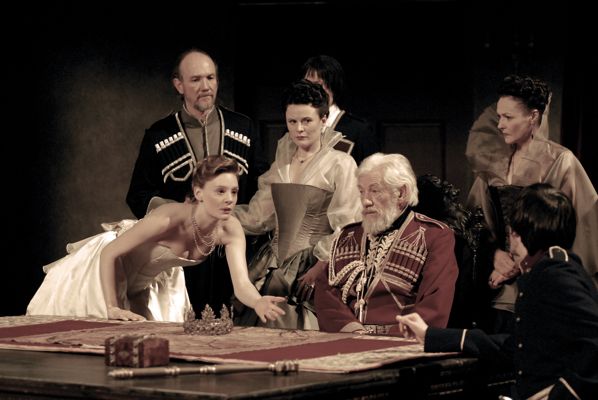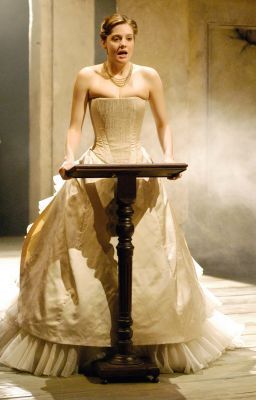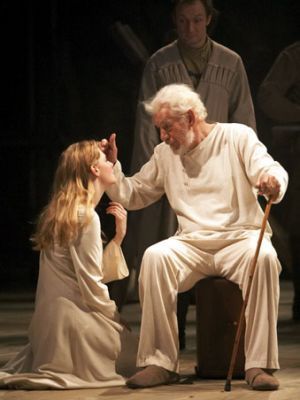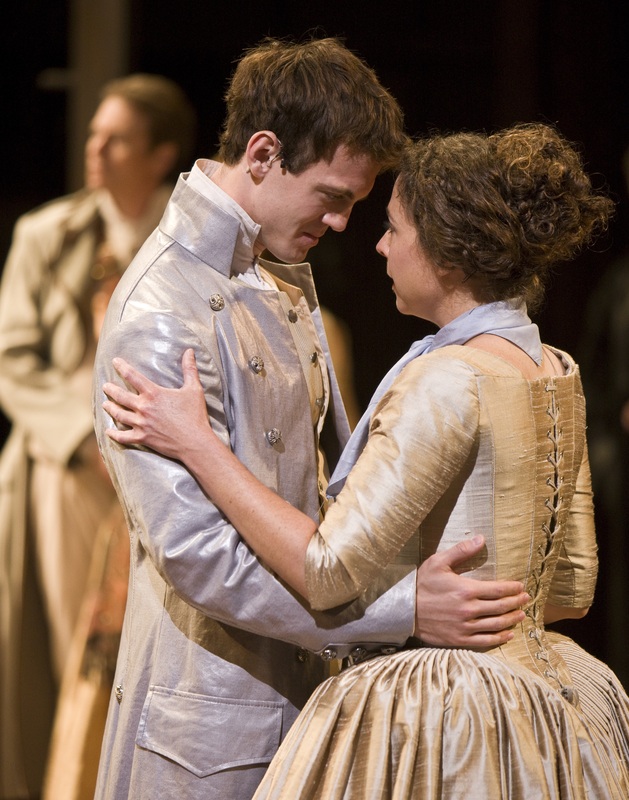Women and Religion
The Bible was seen as a rulebook for women:
- Nevertheless let every one of you in particular so love his wife even as himself' and the wife see that she reverence her husband
- Wives submit yourselves unto your own husbands as unto the Lord
- For the husband is the head of the wife, even as Christ is the head of the Church; and he is the saviour of the body
- Therefore as the Church is subject to Christ, so let the wives be to their own husbands in everything
After Henry VIII all immediate successors were women- Lady Jane Grey, Mary and Elizabeth. They held the title of being supreme religious leaders of the religion in their country. This gave a new power to women in respect of religion. Even though Elizabeth was excommunicated by Pope Pius V.
Elizabeth was a commendable role model for Catholic Church as she retained her virgin status. Position was highly unlikely + created by masters of propaganda to represent this holy and Biblical image of the monarchy.
Fall of Adam and Eve- original sin was from Eve eating the apple
Women held a diverse role in religion due to angel-whore dichotomy.
Angel- Whore Dichotomy
Basic Idea- Female characters are either virtuous or seen as completely immoral. There is no midpoint between the two, women were placed on an 'idealistic pedestal and then as soon as they sinned they had 'fallen' and were impure.
Angel= good at heart, passive, pure, domestic,silent, innocence, child
Whore= sexually promiscuous, immoral, un-married seductress, adulterous wife
Renaissance Literature- Possible example seen in Hamlet. The dichotomy was used to create sympathy for the male characters, even though they themselves may be deemed evil.
Family Life and Chastity
Huge importance placed on the family. Ideas of men and women revolved around marriage. Each person had a role within their family and the 'family hierarchy' was obvious.
Overlap between domestic and patriarchial hierarchy. Seen through the positioning of the father/husband figure as monarch of the household. Any dissent or rebellion in the household was tantamount to treason.
Presence of 2 female monarchs caused great conflict + tension. Slightly altered the roles of men + women. Elizabeth's rule defied all traits of the weakness and gentleness of women.
Chastity was v. important for brides- wives expected to remain entirely faithful. Chastity used as a bargaining tool through the transaction of marriage. Important due to the prevention of the birth of illegitimate children + to product blood lines and natural inheritance lines.
Chastity a virtue equated with purity, innocence and female integrity. An unchaste woman was nothing, she had nothing and her entire reputation would be based on her virginity.
Silence= chastity , highest virtue of a woman. Women seen not heard. Silence was a punishment for sin due to Eve. In contrast was the talkative woman was condemned as a shrew. They were subversive and a threat to the male domain. Tongue was a symbol of the phallus + male authority. The tongue is the the female 'powerhouse' while phallus is the male 'powerhouse' . If female was talkative and one orifice was constantly open then she is sexually open as well. That is so dumb but whatevs.
Renaissance Queens
"I know have the body but of a weak and feeble woman; but I have the heart and stomach of a king, and of a king of England too."
After Edward's death, dispute over succession. Mary was Catholic therefore Lady Jane Grey was named as next in line. Proclaimed queen but Mary entered London with supporters + Jane taken to the tower. She reigned for 9 days- executed 1554
Elizabeth as woman + Protestant caused great conflict during her reign. Some claim Elizabeth to be a feminist but in lots of her speeches she seems to be apologising for the weakness of her gender. Interesting conflict between ideas of femininity and masculinity.
Women in the Microcosm and Women's Inferiority
- Only imperfection in God's perfect creation
- Women- authors of 'Original Sin'
- Women were 'instruments of the devil'
- Church shape by Paul's misogyny
- Female inferiority pre-dates Christianity
- Women were taught from birth that they were inferior to men
Education and Careers
- Women not expected to be educated
- Only 4 of Henry VIII's wives received any formal education
- In the 1st half of 16th cent. people didn't believe in educating women
- Education would be wasted on foolish pursuits
- Exceptions- Lady Jane Grey
- Taught 'wifely' arts
- Education of women were reserved for the rich
- Even then not for independent thought
Feminist Theory- Beginning Theory
Early Feminists- Marilyn French/ Linda Bamber
Early feminist criticism of the play suggest that Shakespeare is a feminist writer, sympathetic to the difficulties of the female he represents
Critics often compare women in the play with Puritan goodwife/ companion/ stereotypes of the time, much debated in Renaissance handbooks, to support their points.
However, doesn't taken into account historical circumstance, only the values ascribed to men and women. This view presents feminism as a set of social attitudes rather than a project for fundamental social change.
Kathleen MclLuskie: 'The Patriarchial Bard: feminist criticism and Shakespeare'
Play is fundamentally misogynistic + paradigm for the sexual politics of its genre and history
Tragedy is misogynistic as although it claims to talk about the existence of a permanent, universal and unchanging condition, the protagonist is always male, male concerns and plots. WS aligns anarchy + sexual insubordination with G + R. Whereas comedy gives a more 3D representation of women, gives them a voice.
All female resistance is defined by gender, sexuality and position in the family; family relations are fixed and any move against them is a destructive move towards the rightful order.
QUOTES TO KNOW:
- 'into her womb convey sterility'
- 'whores do churches build'
- 'women will all turn monsters' servant'
- 'humanity must perforce prey on itself/ like monsters of the deep.'
Coppelia Khan- 'The Absent Mother in King Lear
Misogyny is instrumental and instructive. Charts Lear's progress from misogynist rejection of womanly values to a final acceptance of more womanly qualities.
Exploration of male anxiety
Psychoanalytic reading of play which suggests Lear's desire to be mothered by Cordelia.
"O! How this mother swells upward towards my heart/ Hysterico passion! Down, thou climbing sorrow/ Thy elements below!" Hysterica characterised as feminine- disease of the hyster, the womb.
In Shakespeare's time hysteria also called 'the mother'- vivid metaphor to describe the women in society; destined for childbirth, but physically weaker than a man.
Womb= sign of weakness; remedy is regular sexual intercourse/husband. Signifies her weakness for the flesh over mind/spirit.
1st scene about male anxiety- real purpose is giving away his youngest daughter; paraody of a wedding scene, bond between father and daughter. L deliberately manipulate C due to incestuous purpose.
Surrender of C awakens a deeper emotional need in L- need for daughter/mother
L as child wants absolute power over those closet to him + absoloutely dependent on them. Inversion of Oedipus
As man, father and ruler; habitual need for love has been repressed. Wants to 'crawl' like a baby back 'towards death'. Needs his 'nursery' - R + G don't provide this hence re-enactment of a childish rage about the absence of a mother figure. Desire for love = weakness/ feminised and therefore needs to ask about love in a mercantile love test
Marilyn French, Shakespeare's Division of Experience, 1983
"Men's behavior matters. But women's behavior is of the essence. Cordelia 'redeems nature from the general curse/ which 'twain' have brought her to. The twain are R + G. Cordelia redeems nature; G + R are responsible for its curse. In the rhetoric of the play, no male is condemned as Goneril is condemned. A woman who refuses to uphold the inlaw female principle completely topples the natural order and plunges the world into chaos.




